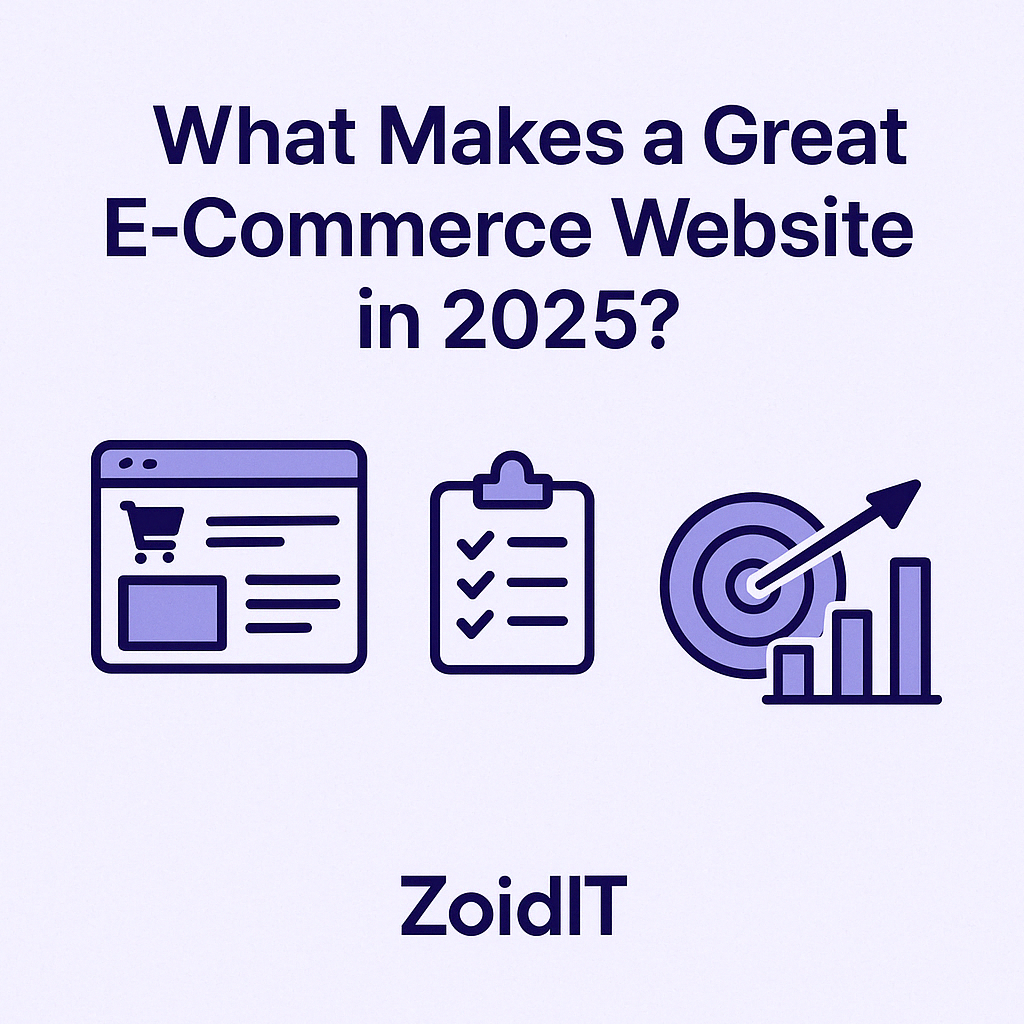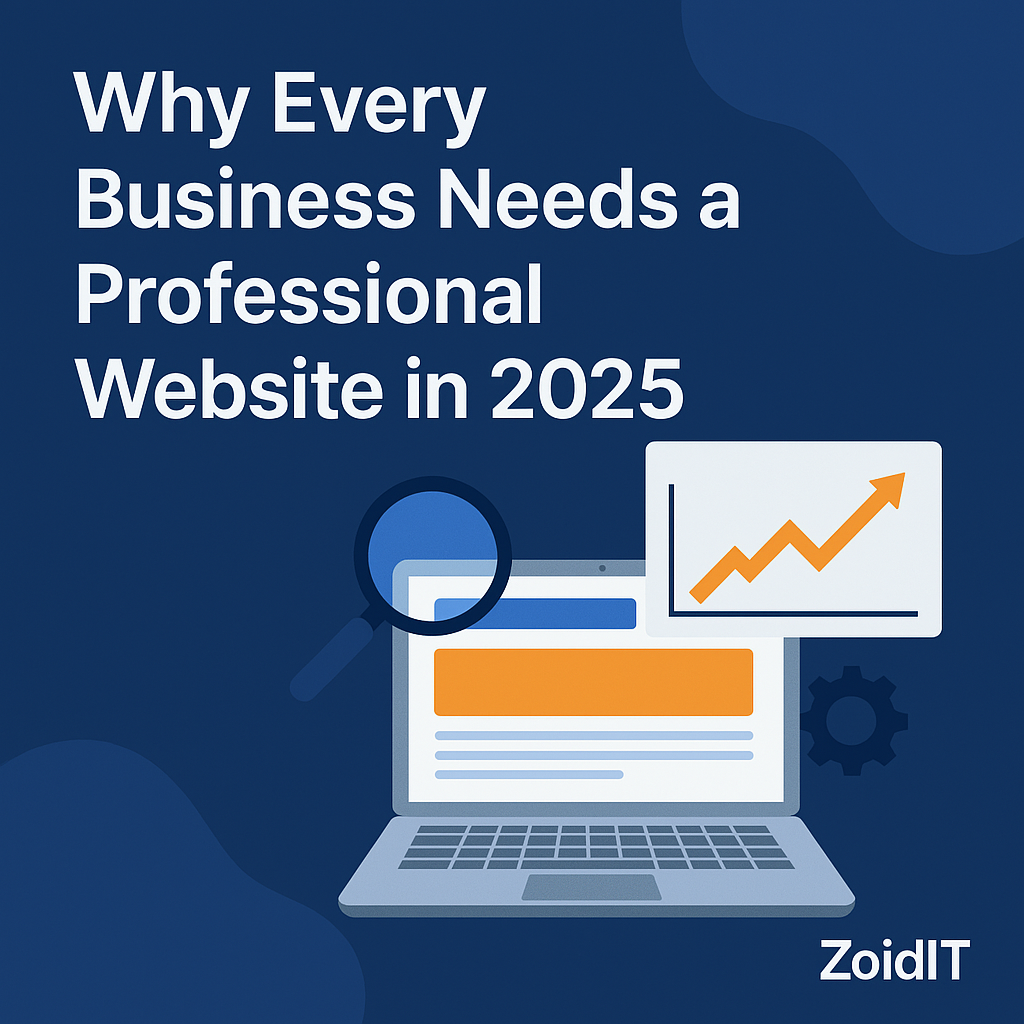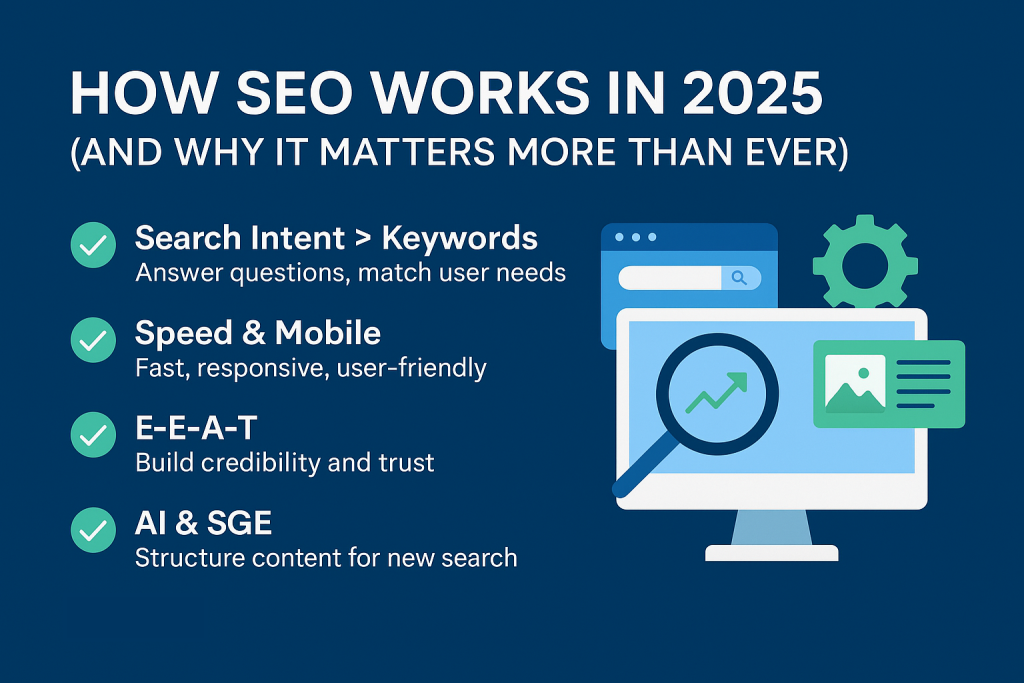
What Makes a Great E-Commerce Website in 2025?
You know that feeling when you land on a site and instantly trust it? Or the opposite — when you leave in five seconds? That’s the power of your e-commerce homepage.
And in 2025, people expect more. They expect fast loading times, smooth navigation on their phones, and a checkout that doesn’t feel like filling out a form at the dentist.
At ZoidIT, we’ve seen how small changes to a site can make a big difference in sales. Whether you’re selling one product or a thousand, a good e-commerce site has to do more than look polished — it has to guide the customer all the way to the “Buy Now” button.
So what does a great e-commerce website need today?
Clear Value, Instantly
The moment someone lands on your homepage, they should understand:
- What you sell
- What makes your store different
- Why they should trust you
Use a strong headline, clear product categories, and visible trust signals — like free shipping badges, reviews, or guarantees.
Don’t make them scroll to figure it out.
Speed That Keeps Shoppers Engaged
This one’s simple: slow sites lose sales.
A delay of even one second can drop conversions by 7% or more. In e-commerce, that’s money walking away.
Every second counts. That’s why we:
- Compress images without quality loss
- Use clean, lightweight code
- Optimise mobile load times
- Eliminate unnecessary scripts
At ZoidIT, we treat speed like a sales tool — because it is.
Mobile-First Design
Your site must be:
- Easy to navigate with thumbs
- Scrollable without frustration
- Touch-optimised (no tiny buttons)
- Fast and glitch-free
If your mobile experience is clunky, users won’t switch to desktop — they’ll just leave.
Seamless Navigation
The best e-commerce sites make it easy to find products, compare options, and buy quickly. That means:
- Clear categories
- Smart filters
- Sticky navbars (on mobile too)
- A clean, distraction-free layout
Don’t bury your best products behind four clicks — feature them upfront.
Trust-Building Elements
Shoppers won’t buy from a store they don’t trust. Show you’re legit with:
- Verified reviews (not fake quotes)
- Secure payment badges (SSL, Visa, PayPal, etc.)
- Clear return policies
- About and contact pages that feel real
Pro tip: Use real photos of your team, packaging, or workspace. It’s small, but it adds authenticity.
A Checkout Process That Doesn’t Suck
A great product and a good price mean nothing if your checkout feels like homework.
Aim for:
- Guest checkout (no forced account creation)
- Minimal steps (ideally 3 or fewer)
- Autofill + mobile wallet support
- Live cart updates
And for the love of UX — don’t hide extra fees until the last step.
Conversion-Focused Design
Every part of your site should help customers move forward, not distract or overwhelm them. This includes:
- Highlighting bestsellers or bundles
- Using urgency (“Low stock!” or “Last day for free delivery”)
- Recommending similar items
- Using clean, bold CTAs like “Add to Cart” and “Buy Now”
Remember: don’t just show products. Sell them.
Bonus: Use Analytics (and Actually Learn From Them)
Google Analytics, Hotjar, Shopify insights — whatever you use, check it often.
Look at:
- Where users drop off
- What pages have high exit rates
- What devices convert best
A great e-commerce website isn’t “finished” — it evolves. The top stores always test and tweak.
Final Thoughts
In 2025, a successful e-commerce website is more than just a grid of products. It’s:
- Fast
- Focused
- Mobile-first
- Customer-centric
- Built with trust and clarity
At ZoidIT, we build online stores that do more than look good — they convert, scale, and support your business goals.
🛍️ Thinking of launching a new online store? Or want to make your current one better? Contact Us!
FAQ
Q: Should I use Shopify, WooCommerce, or something else?
A: Honestly, it depends. Shopify is great if you want something easy and all-in-one. WooCommerce gives you more control, but it’s a bit more technical. We’ll help you figure out what suits your setup and goals best.
Q: How many products should I show on the homepage?
A: Enough to show off what you do best — but not so many that it gets overwhelming. Highlight 4 to 8 of your top sellers or categories to keep things clean and focused.
Q: Do product descriptions matter for SEO?
A: 100%. Unique, well-written descriptions help your products rank on Google.
Q: What’s one thing most e-commerce sites get wrong?
A: Checkout friction. Make it fast, simple, and frustration-free.


